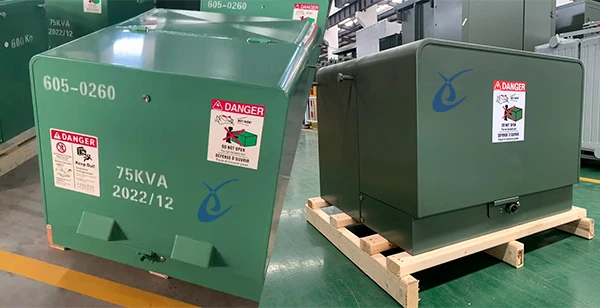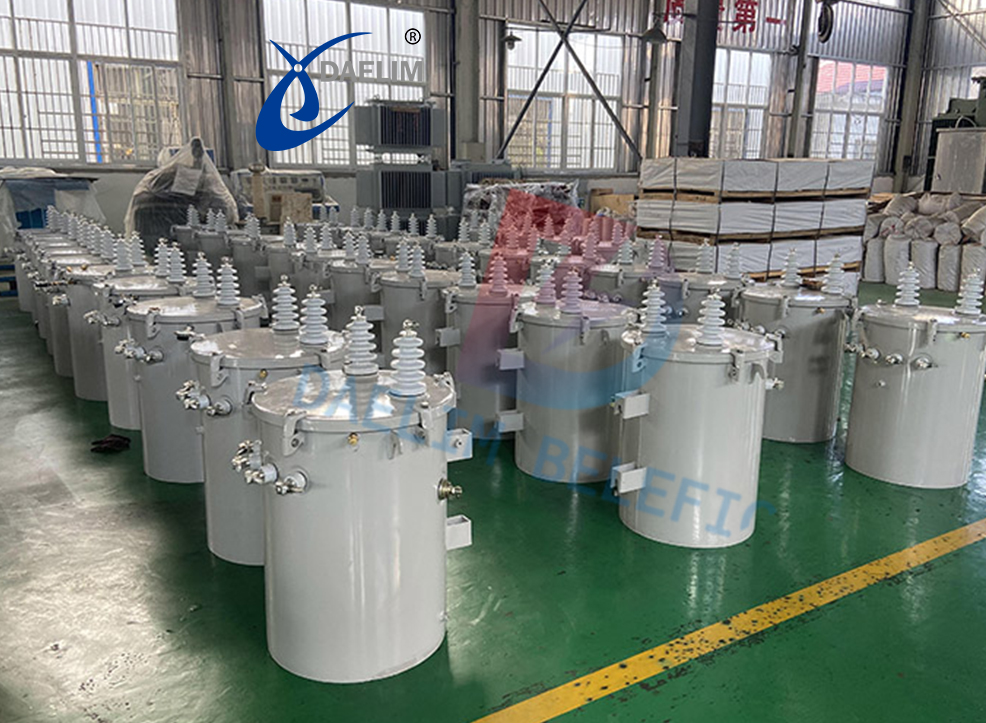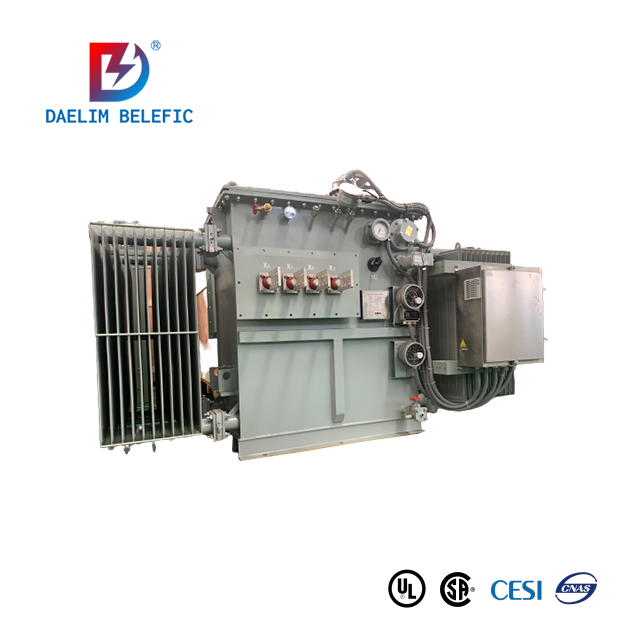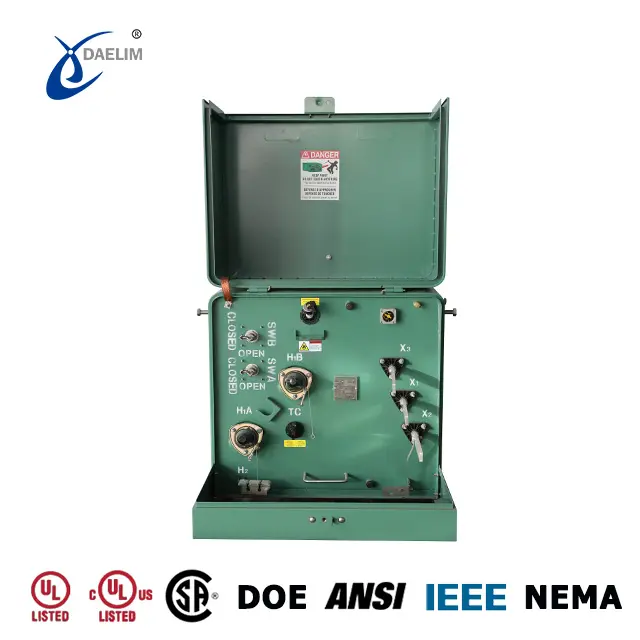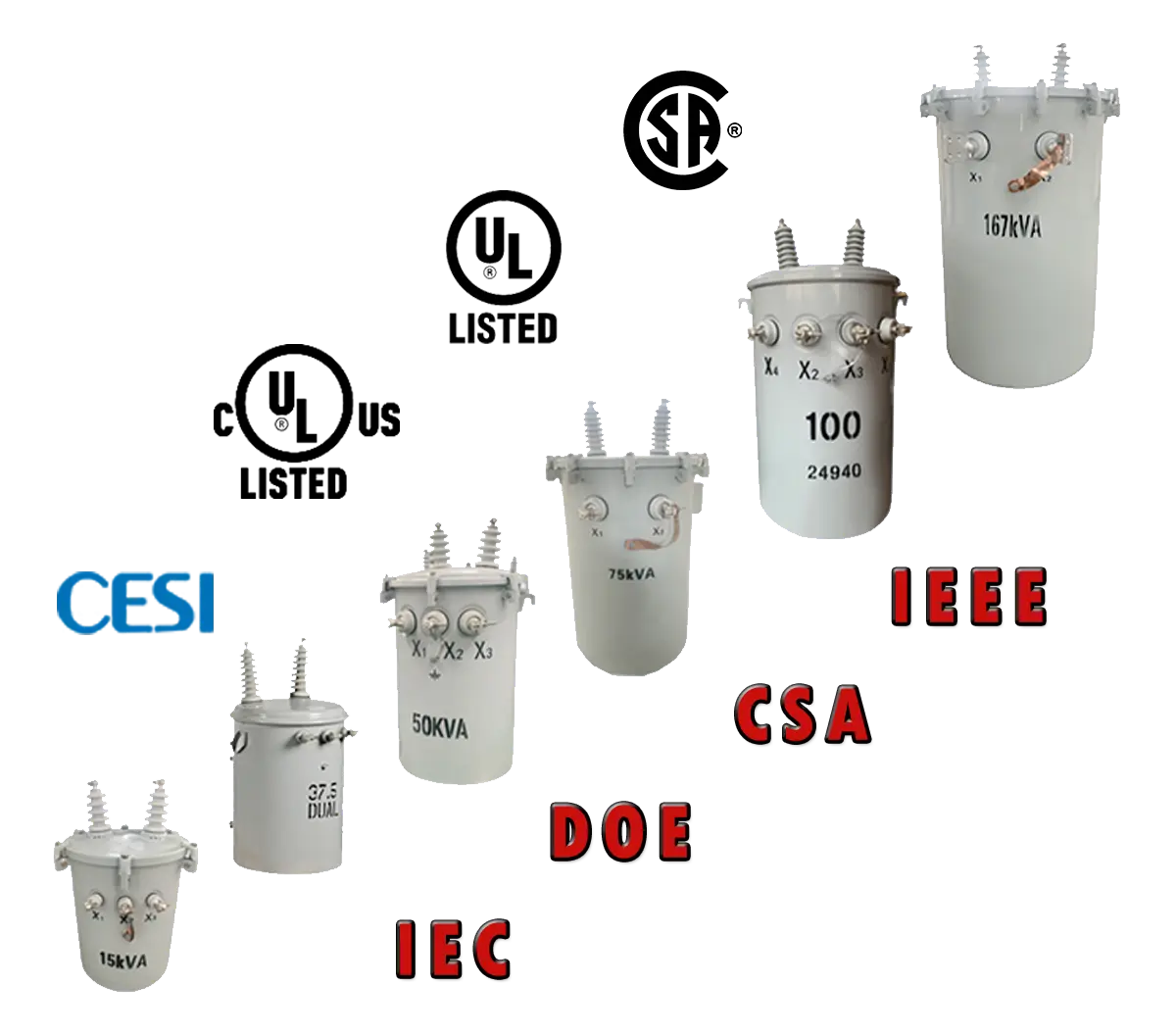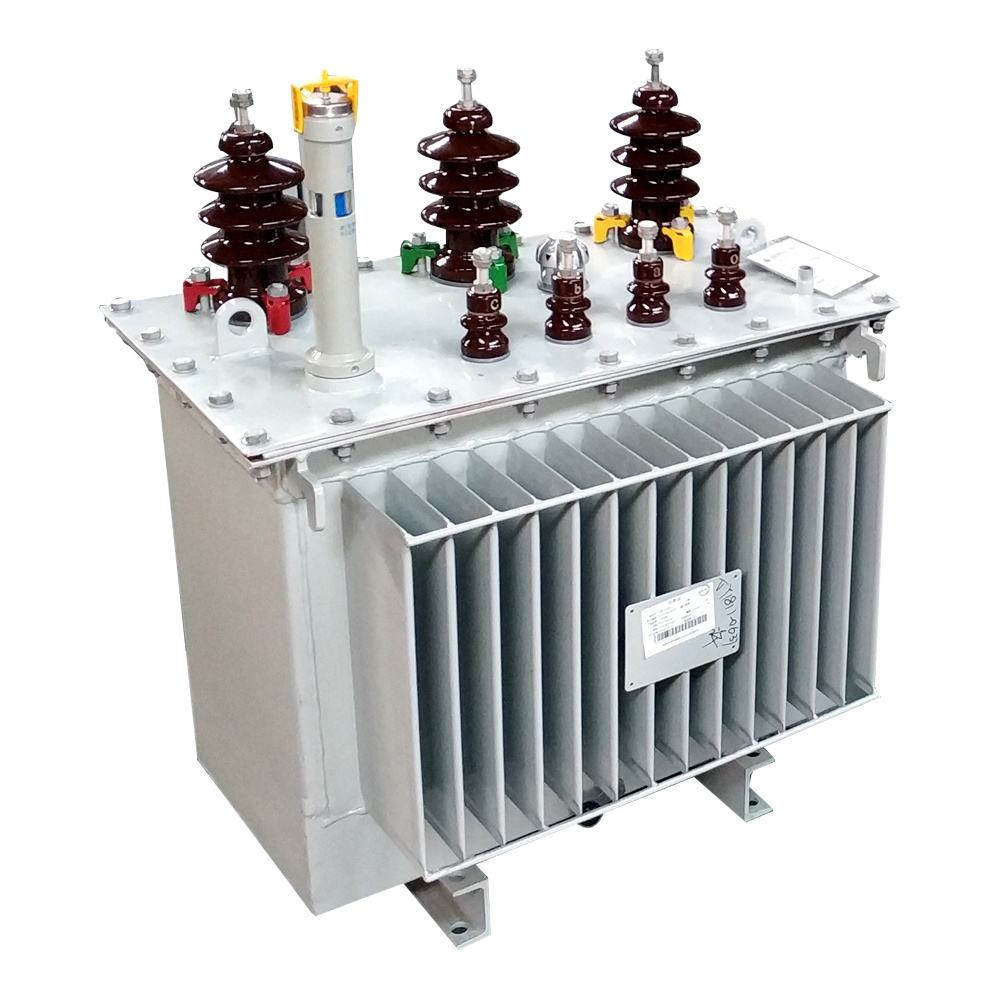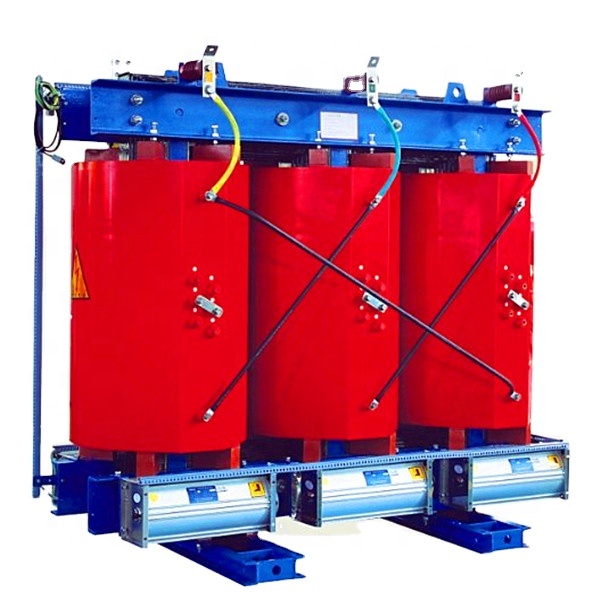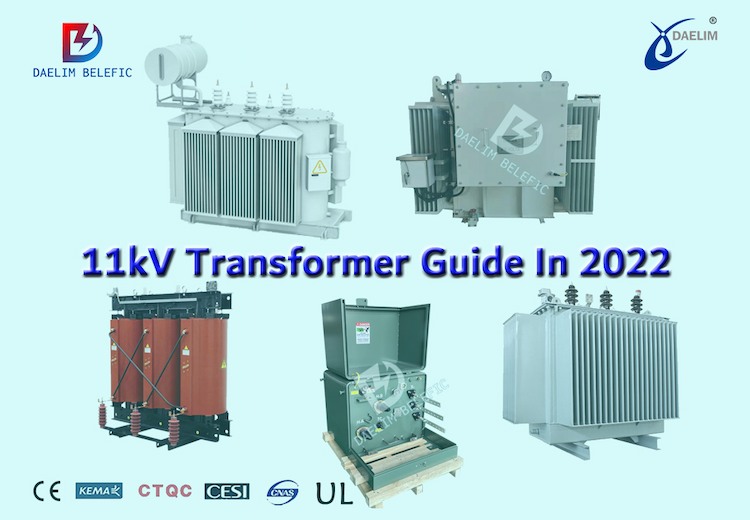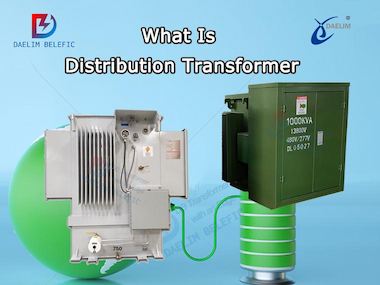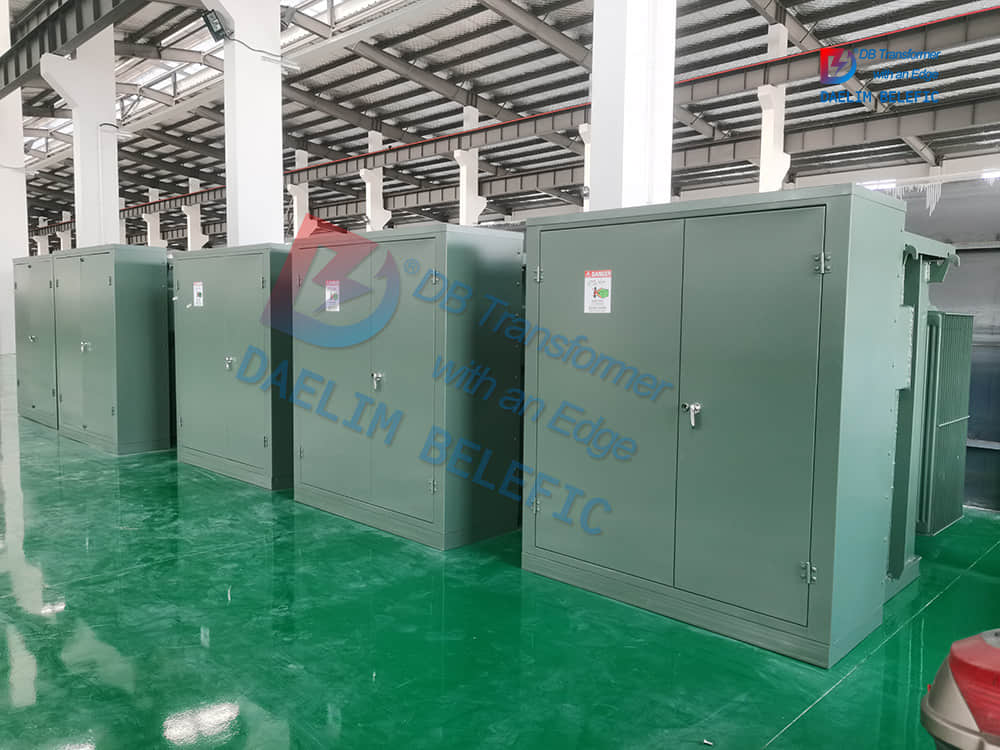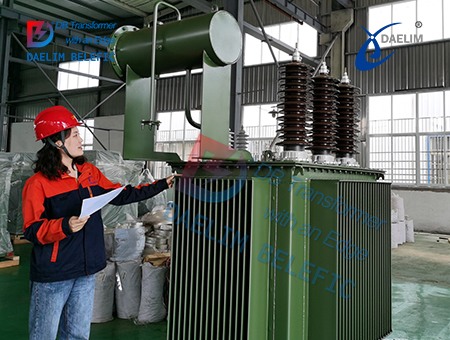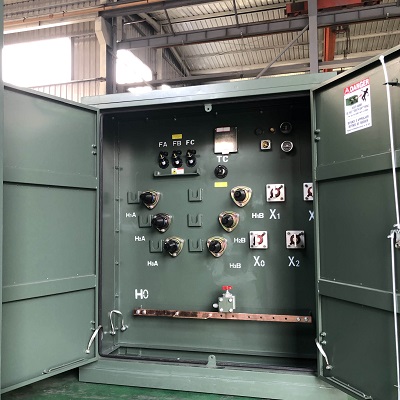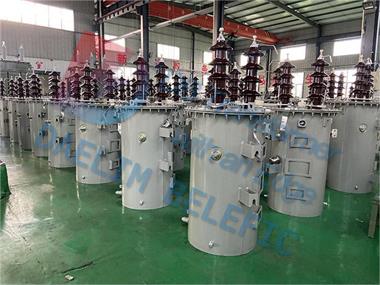10kv Transformer The Ultimate FAQs Guide - Daelim
The Daelin 10kv transformer is available in various models and styles to suit different output voltages and usage scenarios on both the primary and secondary sides. This guide answers frequently asked questions about 10kv transformers, their features, and applications.
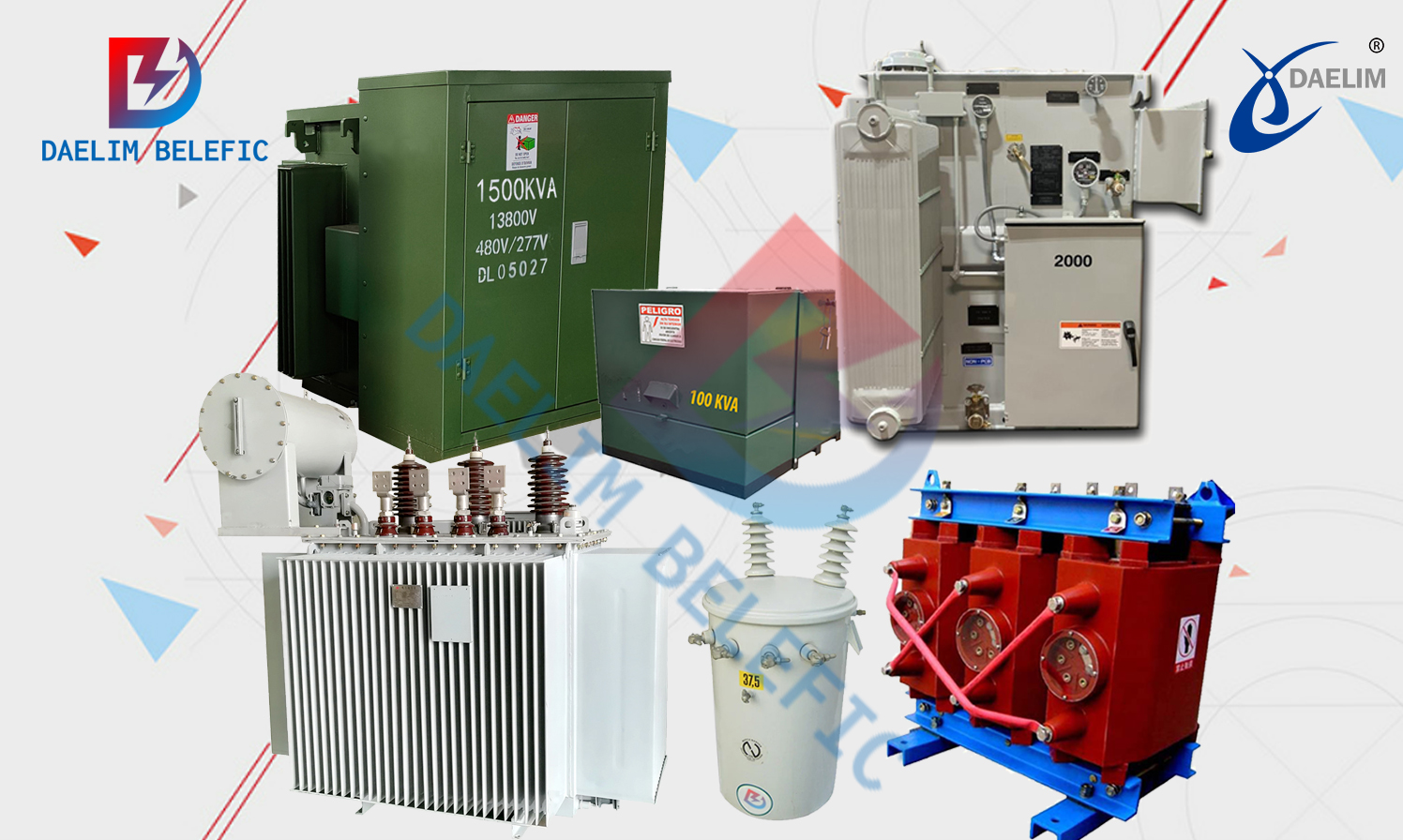
What is a 10kv transformer?
The 10kv transformer is a distribution transformer, which is generally used in transmission lines. Its high-voltage side voltage is 10kv, and the low-voltage voltage is 400V, 415V, 480V, 220V, 110V, etc.A 10kv transformer is usually a power transformer operating in the distribution network. This electrical device transforms voltage from one level to another, typically between primary and secondary windings. 10kv transformers are used in various settings, including distribution substations, industrial facilities, and commercial buildings.
The 10kv transformer is usually referred to as a "distribution" transformer. This is because it uses the law of electromagnetic induction to transmit alternating current (AC) steps down the voltage from the primary to the secondary winding. The secondary winding provides the lower voltage that the customer uses.
Learn more: How to choose the best distribution transformer?
What are the different types of 10kV transformers?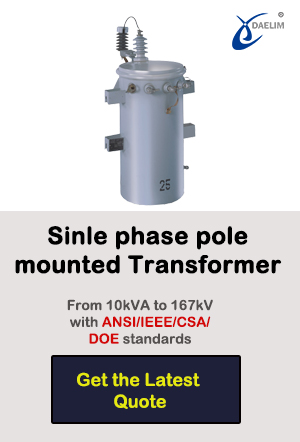
The three (3) main types of 10kv transformers:
10 kV Single Phase Transformer
A 10 kV single phase transformer is the most common type of 10kv transformer. It is used to supply power to households or small businesses that use single-phase power. The primary winding of a single-phase transformer is connected to the main supply, while the secondary winding is connected to the load. There are two types of single-phase transformers produced by Daelim, one is pole mounted transformer and the other is pad mounted transformer. The maximum capacity of single-phase transformer can be 333kVA.
Learn more: Pad Mounted Transformer
10kV Dry Transformer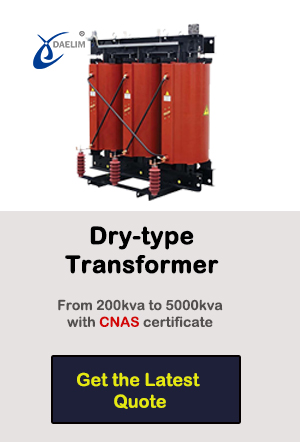
A 10kV dry transformer is a type of transformer that uses air as the main cooling medium, as opposed to oil. This makes them more environmentally friendly than oil-immersed transformers, as there is no risk of oil spills.
Dry transformers are not as efficient as oil-immersed transformers as they tend to have more heat losses. However, they bring ease of use and a less expensive price tag. In addition, 10kv dry transformers are also easier to maintain than oil-immersed transformers. Dry-type transformer usually has a maximum capacity of 2500kVA and a high voltage of up to 35 kV. Daelim's cast resin dry transformer can achieve a larger capacity and voltage.
Read more: Ultimate guide of cast resin dry type transformer
10kV Oil Immersed Transformer
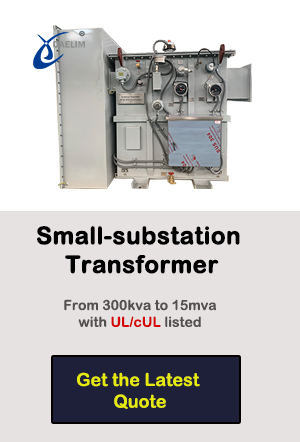
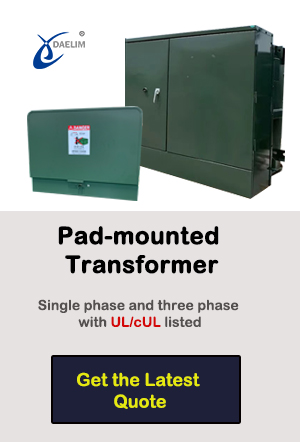
A 10kv oil-immersed transformer is a type of transformer that uses oil as the main cooling medium. Oil-immersed transformers are more efficient than air-cooled transformers as they have lower heat losses.
However, oil-immersed transformers are more expensive to maintain than dry-type transformers. But the purchase price is lower than the dry type transformer. In addition, oil-immersed transformers also pose a risk of oil spills, damaging the environment.
The oil transformers designed and produced by Daelim mainly include three-phase pad mounted transformer and substation transformer. Both of these transformers are sealed designs, so the problem of oil leakage is solved. It also has the characteristics of low loss and strong mechanical properties. The layout of the transformer can be customized according to your needs or project technical requirements. Daelim's engineering team has 20 years of experience in overseas transformer projects, whether it is ANSI/IEEE, CSA, AS, DOE, GOST, and other international standards can be fully satisfied. Daelim's transformers have high product quality and long service life and have product certificates such as UL/cUL, CSA, IEEE, CESI, and test reports from third-party organizations such as SGS.
Get it now: How Much You Know For The Different Types Of Transformers?
What is the Largest Rating of a 10kv transformer?
The average voltage rating of a 10kv transformer is usually either ten or below, or in between 10 to 35 kV with a capacity of 6,300kVA, which is tailored towards the end user. As a result, 10kv transformers are versatile transformers that can be used for different applications and styles in both indoor and outdoor applications.
In addition, 10kv transformers can have a variety of winding arrangements, such as delta/wye, zigzag and Scott-T. These different winding arrangements offer different advantages and disadvantages, which will be discussed in more detail later.
What are the Specifications of a 10kv transformer?
The voltage rating of a 10kv transformer can be either below 10 kV or between 10 to 35 kV. The capacity of a 10kv transformer is usually 6,300 kVA. The primary winding can be either delta or wye, while the secondary winding can be zigzag, Scott-T, or delta/wye.
The 10kv transformer has various features that make it suitable for different applications. These features include:
Low impedance
Low noise level
High efficiency
Compact size
Lightweight
Easy to install
Try for free: Power Transformer-The Ultimate FAQs Guide
10kV transformer specifications
10 kV transformers have different capacity specifications according to different types. Below are the specifications for some common types of transformers.
Oil immersed transformer specifications
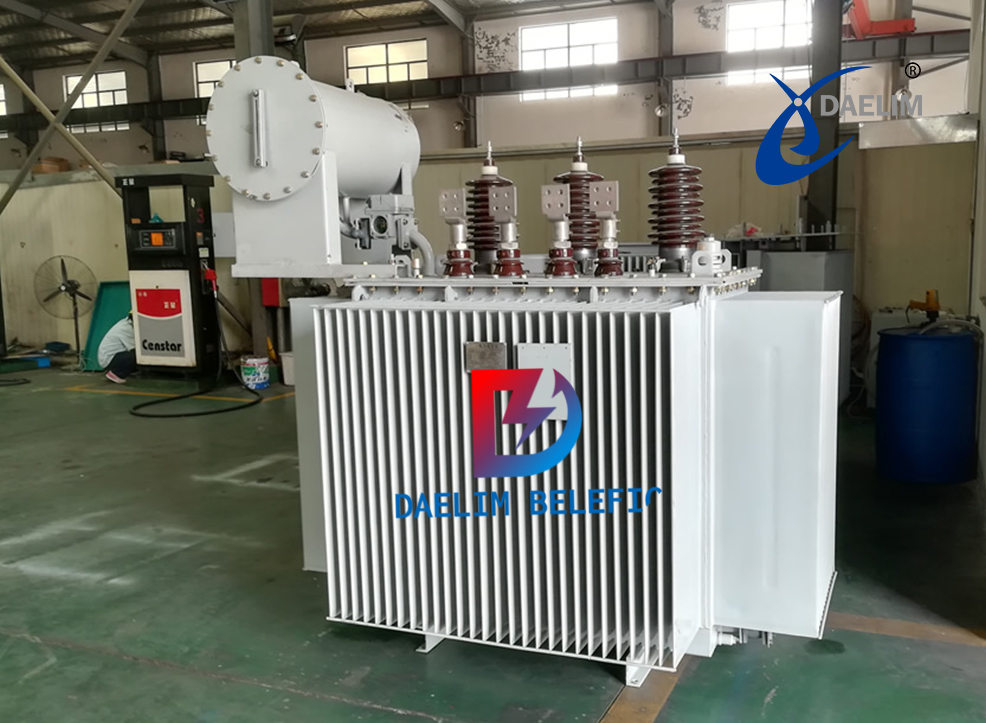
| Power Ratings | No-load loss | On-load loss | Weight(kg) |
| 315kVA | 465W | 3650W | 1005 |
| 400kVA | 560W | 4300W | 1170 |
| 500kVA | 670W | 5100W | 1370 |
| 630kVA | 840W | 6200W | 1700 |
| 800kVA | 980W | 7500W | 2025 |
| 1000kVA | 1190W | 10300W | 2290 |
| 1250kVA | 1360W | 12000W | 2680 |
| 1600kVA | 1640W | 14500W | 3160 |
| 2000kVA | 1980W | 18500W | 4020 |
| 2500kVA | 2450W | 23500W | 4810 |
Three phase pad mounted transformer specifications
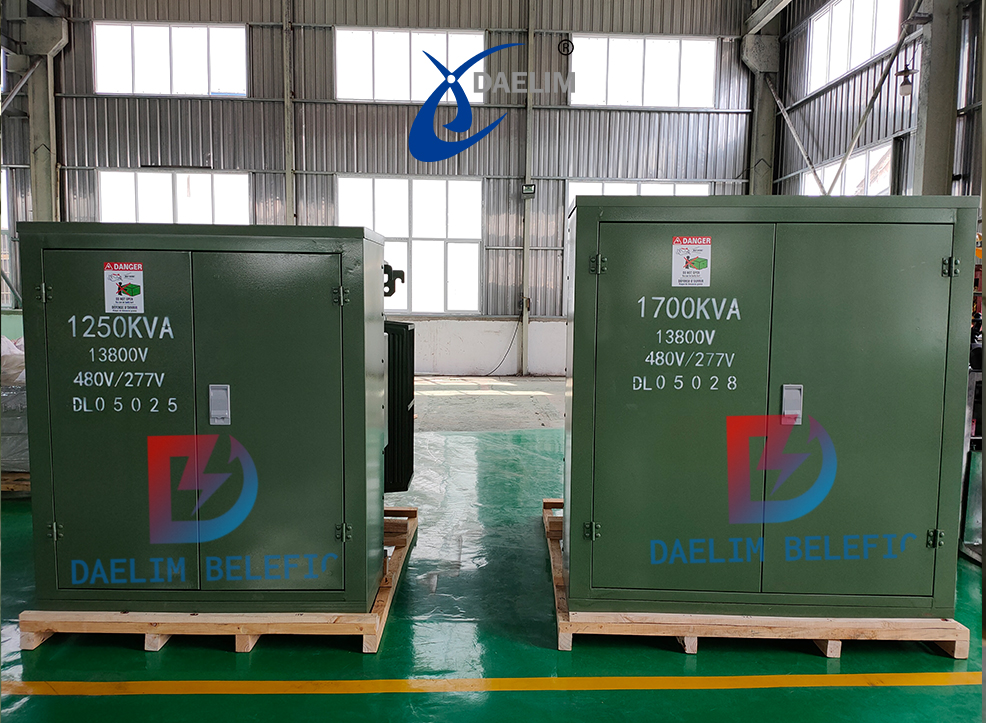
| Power Ratings | Depth | Height | With |
| 75kVA | 65 | 66 | 46 |
| 112.5kVA | 65 | 66 | 46 |
| 150kVA | 66 | 69 | 46 |
| 225kVA | 69 | 69 | 50 |
| 300kVA | 71 | 69 | 53 |
| 500kVA | 70 | 74 | 62 |
| 750kVA | 72 | 75 | 72 |
| 1000kVA | 75 | 78 | 75 |
| 1500kVA | 83 | 83 | 80 |
| 2000kVA | 89 | 86 | 85 |
| 2500kVA | 96 | 87 | 88 |
Get it now: Solar Transformer - Your ultimate guide
Single phase pad mounted transformer specifications
| Power Ratings | Height(mm) | Depth(mm) | With(mm) |
| 10kVA | 840 | 740 | 610 |
| 15kVA | 840 | 740 | 610 |
| 25kVA | 840 | 740 | 610 |
| 37.5kVA | 840 | 740 | 610 |
| 50kVA | 840 | 740 | 610 |
| 75kVA | 840 | 740 | 610 |
| 100kVA | 910 | 1200 | 965 |
| 167kVA | 1000 | 1200 | 965 |
| 250kVA | 1250 | 1300 | 1430 |
Learn more about Single Phase Pad Mounted Transformer
Dry-type transformer specifications
Read more: Ultimate guide of cast resin dry-type transformer
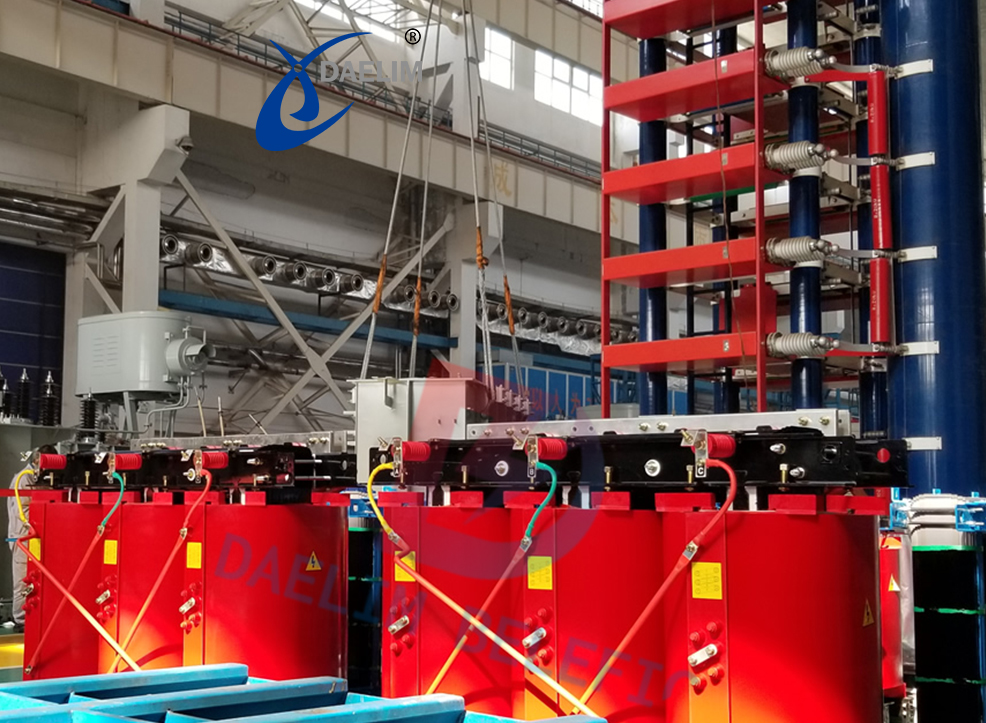
| Power Ratings | No-load loss | On-load loss | Weight(kg) |
| 160kVA | 540W | 2130W | 1420 |
| 200kVA | 620W | 2530W | 1660 |
| 250kVA | 720W | 2760W | 1830 |
| 315kVA | 880W | 3470W | 1900 |
| 400kVA | 980W | 3990W | 2030 |
| 500kVA | 1160W | 4880W | 2250 |
| 630kVA | 1340W | 5880W | 2900 |
| 800kVA | 1520W | 6960W | 3450 |
| 1000kVA | 1770W | 8130W | 3820 |
| 1250kVA | 2090W | 9690W | 4270 |
| 1600kVA | 2450W | 11730W | 5230 |
| 2000kVA | 3050W | 14450W | 5980 |
| 2500kVA | 3600W | 17170W | 7130 |
Single phase overhead transformer specifications
| Power Ratings | No-load loss | On-load loss | Weight(lbs) |
| 5kVA | 19W | 75W | 240 |
| 10kVA | 36W | 120W | 240 |
| 15kVA | 50W | 195W | 300 |
| 25kVA | 80W | 290W | 400 |
| 37.5kVA | 105W | 360W | 500 |
| 50kVA | 135W | 500W | 600 |
| 75kVA | 190W | 650W | 900 |
| 100kVA | 210W | 850W | 1100 |
| 167kVA | 350W | 1410W | 1600 |
Read my article on The Ultimate Guide to 50kVA Transformer
What are the Applications of 10 kV Transformers?
10kv transformers can be used in various settings, including distribution substations, industrial facilities, and commercial buildings.
Distribution substations: 10kv transformers are used in distribution substations to step down the voltage from the transmission network to a level that the customer can use.
Industrial facilities: 10kv transformers are also used in industrial facilities, such as factories and power plants. In these settings, 10 kV transformers are used to step down the voltage from the transmission network to a level the equipment can use.
Commercial buildings: 10kv transformers are also used in commercial buildings, such as office buildings and shopping malls. In these settings, 10kv transformers are used to step down the voltage from the distribution network to a more manageable level.
Residential buildings: 10kv transformers can also be used in residential buildings. In these settings, 10kv transformers are used to step down the voltage from the distribution network to a better and more sustainable level.
Keep reading: The Ultimate FAQ Guide to Wind Transformers-Daelim
How Heavy is a 10kV Transformer?
The weight varies depending on the type of 10kv transformer.
A 10 kV single-phase transformer typically weighs about 140 pounds (lbs.) or 64 kilograms (kgs.)
A 10kv dry transformer typically weighs about 850 lbs. or 1,873 kgs.
A 10 kV oil-immersed transformer typically weighs about 4,000 lbs. or 8,182 kgs.
When it comes to weight, there are things that you need to consider, such as the material used for the construction of the transformer. For example, a 10kv cast resin transformer will weigh less than a 10kv oil-immersed transformer.
You also need to determine what type of cooling system the transformer has. Air-cooled transformers are typically lighter than oil-immersed transformers. Finally, the size of the transformer will also affect its weight—larger transformers will weigh more than smaller, more compact ones.
10kv transformer price
From the above, we know that 10kv transformers are divided into many types and specifications, and the price will vary according to different types and specifications. Generally speaking, the larger the transformer capacity is, the higher the cost will be, and the price of the dry transformer of the same capacity is higher than the price of oil-immersed transformers. Of course, the accessories of the transformer will also affect the cost. If you use internationally renowned brands such as ABB/Siemens/Schneider/Qualitrol/MR, the price will be much higher. The price of a 10kv transformer varies depending on the type, size, and brand of the transformer you're going to purchase.
A 10 kv single-phase transformer typically costs between $1000 and $2,000.
A 10kv dry transformer typically costs between $3,000 and $15,000.
A 10kv oil immersed transformer typically costs between $1,000 and $15,000.
A 10kV three-phase pad mounted and substation transformer typically costs between $5,000 and $35,000
The above is a price range value. The specific transformer price needs to be determined according to the specific technical requirements such as transformer type, capacity, impedance, and efficiency value.
As you can see, there is a big difference in pricing for different types of 10kV transformers. This is because of the different requirements for design, production, and accessories. Therefore, when you buy a 10 kV transformer, you must choose it according to your budget and specific user requirements.
Reading on: 167 kVA Transformers: The Ultimate FAQ Guide
What Happens if the Transformer is Overloaded?
If a transformer is overloaded, it will cause the transformer to overheat. This can damage the transformer and potentially lead to a fire.
It's important to avoid overloading a transformer, as this can cause serious damage. If you're unsure how much power your transformer can handle, you should consult the manufacturer's instructions. Your system will succumb to wear and tear faster if you overload your transformer frequently.
Small, incremental overloads will not cause damage to the transformer, but they will shorten its lifespan. Overloading a transformer can also void the warranty, so check the manufacturer's instructions before using your transformer.
In addition, you should also avoid using a transformer that is not rated for the voltage you're using. For example, using a 10kv transformer to power a 20 kV system can damage the transformer and potentially lead to a fire.
You may enjoy: Do you want to learn more about a 34.5 kV transformer?
What Happens if There is a Power Surge?
A power surge can potentially damage the transformer. A power surge is a sudden increase in voltage that can last for a few seconds or minutes. Power surges can be caused by lightning strikes, power outages, or electrical accidents.
A power surge that hits the transformer can cause it to overheat and potentially catch fire. In addition, the power surge can damage the transformer's electrical components.
You should install a surge protector to protect your transformer from a power surge. A surge protector will absorb the excess voltage and prevent it from damaging the transformer. So, consider installing a surge protector if you live in an area where power surges are common.
How To Convert Amps to kVA?
You can convert amps to kVA by using the following formula:
S = I x V / 1000, where:
I is the amperage is amperes,
V is the voltage in volts,
and S is the resulting power in kilovolt-amperes or kVA
Remember that this formula applies only to a single-phase transformer, which is ideal since most homes only have single-phase power.
For example, if you have a transformer with an amperage of 20 and a voltage of 10,000, the calculation would be:
S = 20 x 10,000 / 1000
S = 200 kVA
This example shows that you need a 200 kVA transformer to power a device with an amperage of 20 and a voltage of 10,000.
Reading more: 11kV Transformer Guide 2022-Daelimtransformer
How to Buy a 10kv Transformer?
When buying a 10kv transformer, you need to consider the following factors:
The type of transformer you need (Air-cooled or oil-immersed)
The power rating (kVA)
The primary voltage (V)
The secondary voltage (V)
The frequency (Hz)
The connection type (Delta or Wye)
The insulation class (A, B, F, or H)
The temperature rise (°C)
The mounting (floor-mounted or wall-mounted)
Once you've considered these factors, you can start shopping around for a 10kv transformer. Be sure to compare prices from different vendors to ensure that you're getting the best deal possible. In addition, make sure to read the reviews before making your purchase.
When shopping for a 10 kV transformer, here are some tips to keep in mind:
Make sure to buy a rated transformer for the voltage you're using.
Do not overload the transformer.
Install a surge protector to protect the transformer from power surges.
Convert amps to kVA using the formula: S = I x V / 1000.
Compare prices from different vendors and read the reviews before making your purchase.
Shop at Daelim for the best selection of 10 kV transformers. Get a quote from us today!
By following these tips, you can be sure to find the best 10kv transformer for your needs. If you have any questions, our team at Daelim is always happy to help. Visit our website now for a free quote!
Read more: How To Purchase 3000kVA Transformer In USA & Canada
10kV Line Fault Finding Quickly
The accident occurs in different sections of the line, and the relay protection action is different.
Current quick-break protection action trip: The protection range of current quick-break protection is generally the largest when a short circuit occurs in the maximum operating mode of the system, accounting for about 50% of the total length of the line. When the line is in the minimum operation mode, the protection range is the smallest, accounting for 15% to 20% of the total length of the line. Therefore, if the current quick-break protection device trips, it means that the fault point is mostly located in the front section of the line (near the substation side).
Overcurrent protection device trips: the protection range of overcurrent protection is 100% of the protected line. However, the overcurrent protection device is usually equipped with a time delay relay at the same time. When used in conjunction with the quick-break protection device, it generally trips when a fault occurs in the rear section of the line.
Try for free: Transformer Neutral Protection Knowledge Guide
Current quick-break protection and over-current protection act simultaneously and trip: This situation generally means that the fault point is located in the common range of quick-break protection and over-current protection, and most of the fault points are located in the middle of the line.
Therefore, when the circuit breaker of the substation is tripped, it is necessary to investigate the operation of the relay protection in time. According to the action type and characteristics of the relay protection device, roughly locate the fault nature and scope.
10kV Line Grounding Fault Judgment
After receiving the notification from the dispatcher on duty about the line grounding, the personnel of the power supply station or the electrician of the factory and mine should know: which phase is grounded, and what is the grounding voltage value of each phase. The value changes, the value is constantly changing or stable, so as to further analyze the grounding situation. Find the point of failure as soon as possible.
① One phase-to-ground voltage is close to zero, the other two phase-to-ground voltages increase by √3 times, and the three-phase phase voltage does not change, which is metallic grounding.
One phase-to-ground voltage decreases, but not zero, and the other two phase-to-ground voltages increase but do not rise to √3 times, which belongs to non-metallic grounding.
Read on: Electrical Transformer Protection Knowledge Guide
② One phase-to-ground voltage increases and the other two phase-to-ground voltages decrease, which is the characteristic of non-metal grounding and high-voltage phase failure.
1) When the high voltage is disconnected, the load side wire falls on the wet ground, and the two phases without disconnection are connected to the ground wire through the load to form a non-metallic grounding. Therefore, the voltage to the ground decreases, and the voltage to the ground increases when the disconnected line is disconnected.
2) The high-voltage disconnection does not land on the ground or fall on an object with poor conductivity, or the fuse on the line fuses in one phase. The disconnected ground line is long, causing the three-phase-to-ground capacitance current to be unbalanced, prompting the two-phase ground voltage It is also unstable, and the capacitance current of the disconnected line becomes smaller relative to the ground, and the voltage to the ground is relatively increased. The other two phases are relatively low.
3) The phase winding of the burned-out phase of the distribution transformer touches the grounding of the shell, the high-voltage fuse is blown again, and the other two phases are grounded through the windings. Therefore, the voltage of the burned-out phase increases relative to the ground, and the other two phases decrease.
Learn more: Substation Transformer Ultimate Guide
③ Distinguish high voltage phase loss from non-metallic grounding.
The high-voltage disconnected line does not land or fall on an object with poor conductivity, or the fuse on the line fuses one phase, and the disconnected ground line is long, causing the three-phase-to-ground capacitance current to be unbalanced, causing the two-phase ground voltage to be unbalanced. Balanced, the capacitance current of the disconnected line becomes smaller relative to the ground, the voltage to the ground is relatively increased, and the other two phases are relatively low.
After receiving the notification from the dispatcher, the personnel of the power supply station should separate the high-voltage phase loss from the non-metallic grounding, and judge whether it is the high-voltage phase loss or non-metallic grounding by checking whether the voltage on the end-user is balanced. The disconnected user has only two-phase electricity, and the load voltage of the grounded user does not change significantly.
Read on: How to purchase a 2 MVA power transformer?
10kV Line Ground Fault Insulation Judgment
The overall insulation shaking judgment method can quickly and effectively find the insulator with poor insulation, which becomes the key to the line ground fault finding.
The overall insulation shaking method of the line is more suitable for 10kV lines with short lengths, fewer distribution transformers, and no crossing of other lines of 10kV and above. Safety measures should be taken before implementing the overall insulation shaking method of the line to ensure that there is no possibility of reverse power transmission to the test line, especially when the short-circuit grounding wire cannot be hung at both ends of the working line to ensure personal safety. On both sides of the maximum segment point of the line (the breakpoint that can divide the line into the closest front and rear lengths), a branch line that meets the above conditions can also be regarded as the overall line insulation resistance shake test.
This method is not only suitable for monitoring the insulation level of the line to grasp the overall insulation condition of the line, but also suitable for the situation when the traditional processing method cannot find the ground fault of the line. When using the whole line insulation shaking method to find the ground fault of the line, compare the insulation values on both sides of the shaking point, and the lower side should be the fault section.
Learn more: How To Choose The 2500 KVA Transformer For Your Project In 2022?
Before judging the faulty phase of the fault section, it should be ensured that the line distribution transformer and capacitor are all disconnected. The insulation value is much smaller.
Since the insulation values of three phases A, B, and C on the same side are generally the same under normal circumstances, the three-phase insulation values of all the faulted sections are compared after shaking, and the phase with the lowest insulation value is the faulty phase. According to this method, the fault segment is searched in sequence until the fault point is found.
For a certain section of a specific line, the insulation resistance value and ambient temperature at that time should be measured and recorded in detail when the line is put into operation, and a complete line insulation file should be established. And the horizontal comparison to determine whether the line insulation is good to lay a good foundation. According to the statistical experience, the insulation value measured in the ground fault finding of the line on sunny days is less than 40MΩ, which is unqualified. If the switch of the distribution transformer is not opened during the test, it is less than 30MΩ.
Get it now: 3 Phase Pad Mounted Transformer-Daelim Belefic
For a certain section of a specific line, the longitudinal comparison should be made with the insulation value of the latest preventive test. If the insulation value has a relatively large drop, it can be determined as insulation damage. For lines with few line breaking points, the tension rod drain wire can be unfastened in the middle of the line, and the two sides of the suspension insulator are regarded as the breaking points, and the insulation on both sides is shaken to determine the ground fault point.
Try for free: Daelim Internation Projects Cases
How To Maintain a 10kv Transformer?
To ensure that your 10kv transformer lasts for many years, it's important to perform regular maintenance. Here are some tips on how to maintain your transformer:
Clear the Area from Debris
Make sure the area around your 10kv transformer is clear from debris. Debris can build up on the transformer and cause it to overheat. In addition, debris can damage the transformer's electrical components. To avoid these problems, regularly clean the area around your transformer.
Inspect the Transformer Regularly
It's important to inspect the transformer regularly for signs of damage. Look for cracks, leaks, or any other abnormalities. If you notice any damage, contact a professional to have the transformer repaired or replaced.
Keep the Transformer Cool
To prevent the transformer from overheating, make sure to keep it cool. One way to do this is to keep the area around the transformer clear from debris. In addition, you can install a cooling system, such as a fan, to keep the transformer cool.
Avoid Overloading the Transformer
Overloading the transformer can cause it to overheat and break down. To prevent this from happening, ensure not to exceed the transformer's power rating. In addition, be sure to size the transformer for the load properly.
Maintaining your 10kv transformer is important to ensure that it lasts many years. By following these tips, you can be sure that your transformer will continue to work properly.
Learn more: A 150 kVA transformer introduction
What is the Lifespan of a 10kv Transformer?
The lifespan of a 10kv transformer varies depending on several factors like where it's installed, how it's used, and how well it's maintained. However, with proper installation and maintenance, most 10kv transformers can last up to 30 years—with some even lasting up to half a century.
One of the most significant factors that affect the lifespan of a 10kv transformer is how it's used. If the transformer is constantly being used at full capacity, it will wear out faster than one that's only used occasionally. In addition, if the transformer is constantly exposed to extreme temperatures or harsh conditions, it will also have a shorter lifespan.
Another factor that affects the lifespan of a 10kv transformer is how well it's maintained. A regularly cleaned and inspected transformer will last longer than one that's not. In addition, a transformer that's properly cooled will also have a longer lifespan.
By following these tips, you can be sure to get the most out of your 10kv transformer.
Daelim has 16 years of experience in the design, production, and export of transformers. It has a professional team of transformer technical engineers and a professional business support team. If you are looking for cooperation with transformer manufacturers in China, please feel free to contact Daelim.
Related Products
Related Article
11kV Transformer Guide
The 11kV transformer can be a step-up transformer or a step-down transformer. The windings of 11kV transformers can be one, two or three, depending on the number of windings and different applications.
What Is Distribution Transformer?
Daelim Transformer, a professional American Standard manufacturer, offers a variety of UL-listed distribution transformers, including pad-mounted, pole-mounted, and small power transformers.
Comprehensive Guide to 1000kVA Transformers by Daelim Transformer
Daelim Transformer offers a 1000 kVA transformer suitable for various applications, including renewable energy, industrial, and commercial sectors. These transformers comply with international standards such as IEC, AS/NZS 60076, ANSI/IEEE, and CSA. They are available in both dry-type and oil-immersed designs, with voltage ratings ranging from 2.4 kV to 46 kV. Features include aluminum windings, ONAN cooling, and optional accessories like load break switches and fuses. Daelim provides customization options to meet specific requirements.
Three-phase Transformer Basic Guidelines 2022 | Daelim Belefic
Three-phase transformer is a very important part of the electric system and the power industry, and they are very common in our daily life. So what should we know about three-phase transformers? Check our today's article to find out!
How Do I Choose A 1500kva Transformer
Daelim's 1500 kVA transformers are designed for various applications, including distribution systems and blockchain operations. They offer multiple configurations such as pad-mounted, substation, and oil-immersed types. These transformers comply with international standards like IEC, ANSI, IEEE, CSA, and AS. Key features include aluminum windings, 65°C temperature rise, and advanced protection mechanisms.
How to buy an electric pole transformer-Daelim
Electric pole transformer is also called pole mounted transformer. This article mainly introduces the definition, type, operation, and application of electric pole transformers. Daelim is a manufacturer and distributor specializing in the production of electric pole transformers, with a broad American market.

